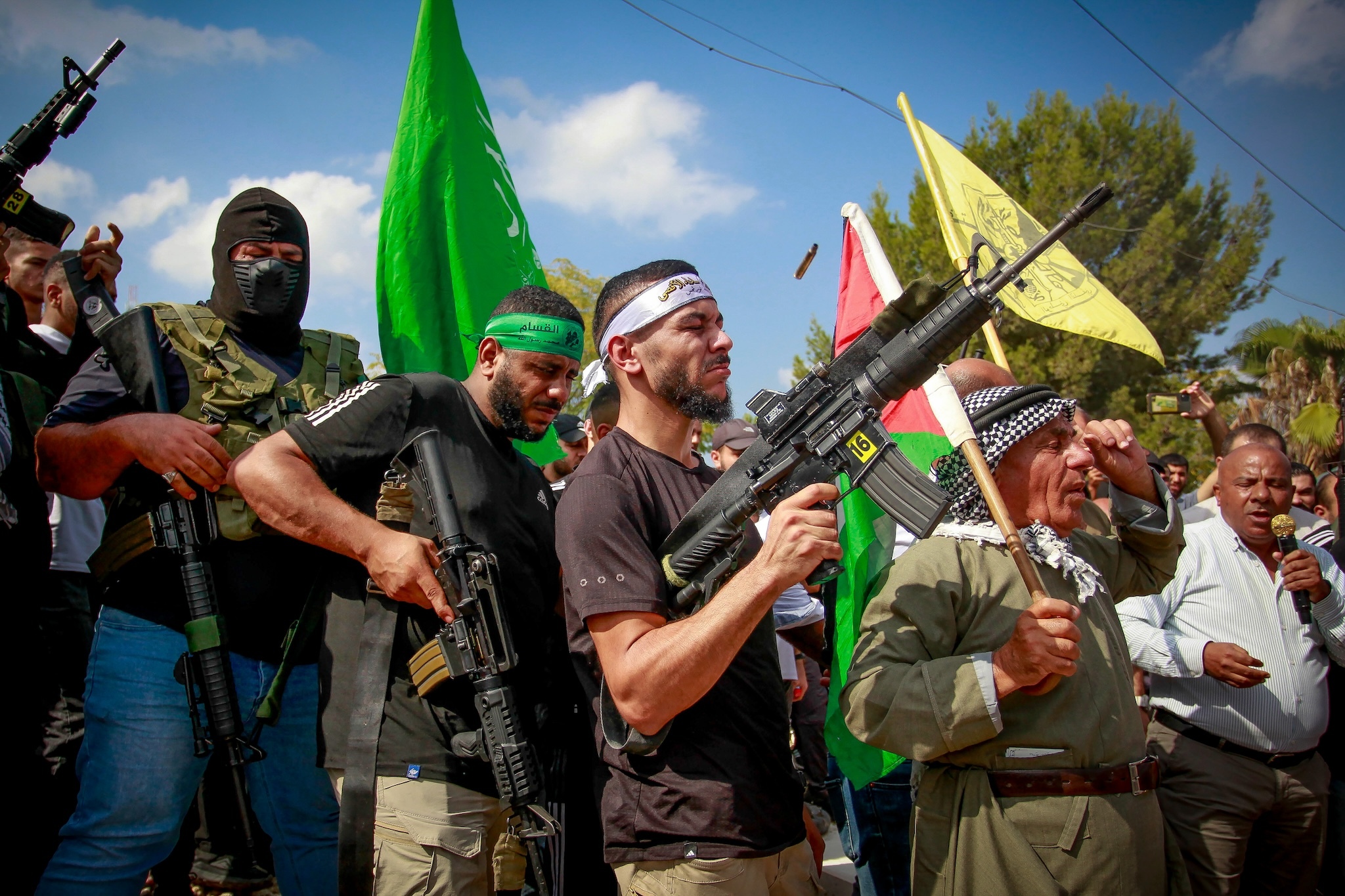Nearly 20 years after the Second Intifada ended, the Israeli military has fully resumed its use of air power in the West Bank, particularly in the northern part of the occupied territory. Since October 7, it has launched more than 46 drone attacks and airstrikes in the area — the latter of which killed 77 Palestinians, including 14 children, by the end of June.
Jenin has been a particular target of this campaign. Despite scores of military incursions, a dozen airstrikes, and extensive operations since October 7, Israel has been unable to quell Palestinian armed resistance in the city and its refugee camp — primarily led by the Jenin Brigade, an umbrella group made up of various factional militias.
Jenin refugee camp holds significant symbolic value for Palestinians, with a legacy of defiance dating back to the Second Intifada and “Operation Defensive Shield,” the notoriously brutal campaign led by Israeli Prime Minister Ariel Sharon in 2002. This history reinforces the determination of many local fighters and civilians to resist the Israeli military. It also inspires solidarity and support from across the Palestinian territories, turning the camp into a focal point of the broader struggle against the occupation.
Israel’s dozens of operations since October — which deploy artillery, ground forces, drones, and other advanced technologies — have devastated the refugee camp. D9 bulldozers frequently rampage through the narrow alleys, with soldiers opening fire, breaking into and searching homes, while aircrafts launch missiles into the camp.
According to Harb, the political analyst, the PA’s challenge is to navigate this precarious situation, balancing its security responsibilities while addressing the legitimate grievances of its population. “The public image of Abu Shuja over people’s shoulders symbolizes defiance against the PA,” he said. “The PA is trying to shield itself from the rising opposition that supports the image of militants and armed resistance.”
The article goes into a lot more info about the recent rise of armed resistance in Jenin and other Refugee camps in the West Bank, but I wanted to share this poll
A recent poll by the Palestinian Center for Policy and Survey Research (PCPSR), for example, showed growing support for armed resistance against Israel, at 63 percent, while 62 percent support the dissolution of the PA.
“The PA must understand that the resistance is driven by a sense of injustice under the occupation, but the sense of betrayal from their own people could shift their focus from Israeli forces to PA security personnel,” the young Fatah activist said.
Diplomacy doesn’t works with israel, there’s no other option than armed struggle in a land that is fully considered palestinian by the UN
Have they tried removing their settlers and apartheid?
972 Magazine - News Source Context (Click to view Full Report)
Information for 972 Magazine:
MBFC: Left-Center - Credibility: High - Factual Reporting: High - Israel
Wikipedia about this sourceSearch topics on Ground.News
https://www.972mag.com/jenin-tulkarem-armed-resistance-israeli-repression/
https://www.972mag.com/jenin-refugee-camp-israeli-raids-palestinian-resistance/
https://www.972mag.com/armed-drones-automated-killing-palestinians/
https://www.972mag.com/israel-war-refugee-camps-jenin/
https://www.972mag.com/topic/jenin/


